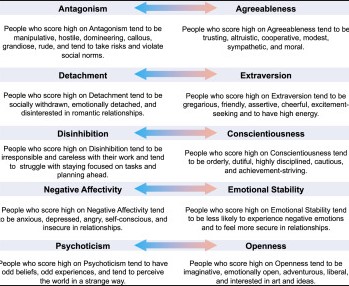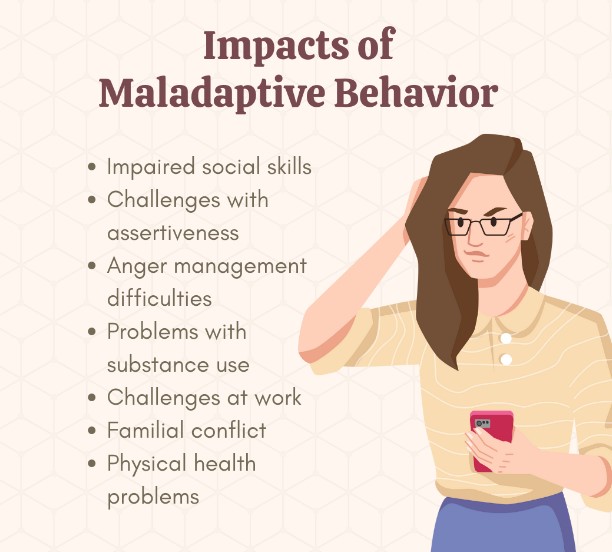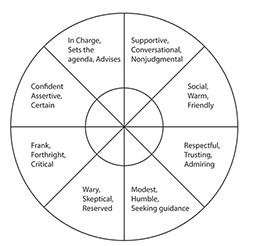Adaptive and maladaptive behavior can be difficult to differentiate. In this blog, we will explore the differences between these two types of behavior and how to identify which is which. We will discuss how understanding the differences between adaptive and maladaptive behavior can help us better understand our own behavior and that of others.
Finally, we will explore the implications of these two types of behavior and how they can be managed.
Definition of adaptive and maladaptive behaviors

Adaptive behavior is defined as behavior that helps an individual to cope with changing environmental demands in order to survive and thrive. These behaviors are often seen as positive, as they promote growth and development.
Maladaptive behavior is often seen as a coping mechanism for stressful situations, but it can have long-term negative consequences. The difference between adaptive and maladaptive behavior is that adaptive behavior is beneficial and helps an individual to cope with the challenges of life, while maladaptive behavior is detrimental and can lead to long-term negative consequences.
Causes of maladaptive behaviors

Adaptive behavior is any behavior that helps an individual survive, thrive, and live a healthy and productive life. It is the ability to adjust to changing circumstances and to take on new tasks and challenges. Maladaptive behavior, on the other hand, is any behavior that hinders an individual’s ability to function in society.
It is often characterized by an inability to cope with stress, difficulty forming relationships, and a lack of self-control. The causes of maladaptive behavior can range from psychological, environmental, and biological factors.
Common psychological causes include trauma, abuse, neglect, and mental illness. Environmental causes of maladaptive behavior can include poverty, abuse, and neglect.
Indicators of maladaptive behaviors
Adaptive behavior is any behavior that allows an individual to effectively adjust to their environment and be successful, while maladaptive behavior is any behavior that hinders an individual’s success. While some behaviors may be seen as both adaptive and maladaptive, such as seeking attention, the distinction lies in the outcome of the behavior.
Indicators of maladaptive behaviors can include isolation, aggression, difficulty in forming relationships, difficulty in expressing emotions, and difficulty in meeting obligations.
Effects of maladaptive behaviors
The difference between adaptive and maladaptive behavior can be summed up in one word—consequence. Adaptive behavior is behavior that leads to positive outcomes, while maladaptive behavior is behavior that leads to negative consequences.
On the other hand, maladaptive behavior can lead to physical and mental health problems, difficulty in relationships, and negative outcomes in life. In order to live a successful and healthy life, it is important to recognize the difference between adaptive and maladaptive behavior and to strive to make more adaptive choices.
Strategies to reduce the risk of maladaptive behaviors
The terms adaptive and maladaptive behavior describe different types of human behavior. Adaptive behavior is behavior that helps us to cope with life’s challenges and to fit into our environment. Maladaptive behavior, on the other hand, is behavior that does not help us to cope with life’s challenges and that can interfere with our relationships and goals.
Maladaptive behavior, on the other hand, is behavior that does not help us to cope with life’s challenges and that can interfere with our relationships and goals. It is important to recognize the differences between these two types of behavior in order to reduce the likelihood of engaging in maladaptive behaviors. Strategies for reducing the risk of maladaptive behavior include developing healthy emotional coping strategies, cultivating supportive relationships, and learning to identify and address underlying causes of distress.
With a combination of self-awareness and support, we can reduce the risk of maladaptive behavior and learn to live more fulfilling and meaningful lives.
Conclusion
In conclusion, adaptive behavior is behavior that helps an individual to adjust to their environment and succeed. Maladaptive behavior is behavior that hinders an individual from adjusting to their environment and succeeding.
Both behaviors are important for an individual to understand and recognize so that they can achieve success and maintain their mental health.

